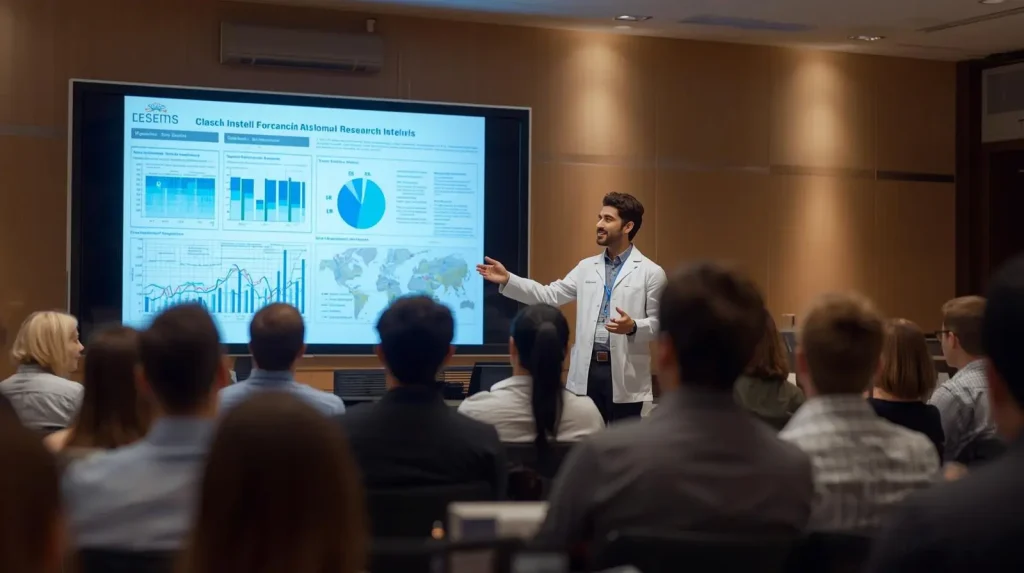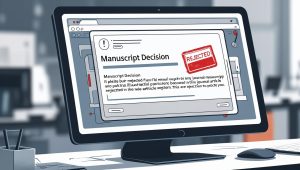Scientific conferences are essential venues for presenting initial research, discussing ideas, and gathering feedback from the academic community. However, most papers shared at these events are only published in conference proceedings or remain as presentations that are not widely accessible. Converting a conference paper into a journal article helps you strengthen your research, reach a broader audience, and create a more lasting academic impact.
This process does not involve copying the original text but instead focuses on expanding and strengthening the article to meet the standards of a scientific publication. Below, we will discuss key aspects of this article conversion process.
Conference and scientific journal: two formats with different objectives
A conference paper and a journal article both aim to share research results, but they serve different purposes. At a conference, the main goal is to quickly present findings, spark immediate discussion, and explore collaboration opportunities. Therefore, conference papers are typically brief and focus mainly on results.
A journal article, by contrast, needs to provide a much more in-depth analysis. It is longer and more carefully organized since the audience is typically broader. While conference attendees are usually already familiar with the topic, journal readers might not have that background, which calls for a more thorough explanation and justification of the study's importance.
Editorial and legal aspects to consider
One of the most important steps before submitting the extended version of a conference paper is to carefully review the journal's editorial policies. Not all journals accept papers derived from conferences, and if they do, they set very specific requirements. In general, the journal article is expected to exceed 30–50% new content compared to the original text. This involves expanding the theoretical framework, adding additional data, strengthening the discussion, and offering more developed conclusions.
If the conference paper is published in proceedings with a DOI or ISBN, most journals require it to be explicitly cited. In some cases, an accompanying letter explaining what is new in the manuscript is also required.
Another key point is online availability. If the conference paper is stored in an institutional repository or on the event's website, it is advisable to confirm that the journal does not view it as a previous publication. Lastly, reviewing the copyright is essential. Some academic societies or publishers may require the transfer of rights when publishing the proceedings, which could limit the reuse of the text.
Strategies for transforming the conference paper
Converting a conference paper into a journal article involves expanding and rewriting several important sections.
- Introduction and conclusions:the introduction should reinforce the contextualization, clarify the objective, and emphasize the relevance of the study in relation to current debates. The conclusions, meanwhile, should go beyond summarizing the results, explain theoretical and practical implications, and suggest possible future research directions.
- Theoretical frameworka common mistake is using the same literature review as in the conference paper. For the journal version, it is important to add more literature, update references, and situate the study within a strong conceptual framework.
- MethodologyAt a conference, methodological details are often summarized due to space constraints. In a journal article, a higher level of detail is expected to enable the study to be replicated, so it is advisable to expand the description of the design, sample, instruments, and limitations.
- Results and discussionThe results section should be expanded with better-structured tables and figures, but most importantly, with a more in-depth analysis. The discussion should connect the findings to previous research and clearly highlight the novel contribution.
- Style and formatAcademic writing in journals demands a higher level of formality. It is crucial to adapt the language, strictly follow the publication's style guidelines, and ensure consistency in citations and references.
Common mistakes in converting a conference paper into a journal article
Many articles are rejected because authors make mistakes like the following:
- Submitting a manuscript that is virtually identical to the conference paper.
- Failing to cite the original paper published in the proceedings.
- Ignoring editorial policies on extended versions.
- Adding superficial content without improving the quality of the analysis.
- Neglecting formal citation, table, or figure standards.
Avoiding these mistakes greatly improves the chances that the article will be accepted.
How to organize the writing process
Transforming a conference paper into a journal article works best when you approach it as a structured process. Ideally, create a schedule that divides the work into stages: introduction, theoretical framework, methodology, results, and discussion. Using the feedback received at the conference is also helpful, as it often highlights gaps that can be addressed in the final version.
If there are co-authors, it is advisable to assign responsibilities and hold follow-up meetings. Before submitting the article, it is a good idea to compare the new version with the original paper to ensure that substantive contributions have been genuinely added.
A key step in increasing academic impact
Each conference paper presents a chance to become a journal article with higher visibility and citations. Failing to seize that opportunity leaves the research in a format with limited reach.
Transforming a presentation into an article not only involves meeting formal requirements, but also rethinking the research to present it with greater strength, depth, and relevance. It is an additional effort, but with clear benefits: more academic recognition, more chances of being cited, and a greater contribution to the advancement of knowledge.
Sources
DeJong, T. (2023). Conference proceedings vs. journal paper. Chronica Horticulturae, 63(2), 5-6. https://www.ishs.org/sites/default/files/news-documents/ch6302_conferenceproceedings_vs_journalpapers.pdf
The Institution of Engineering and Technology (s.f). Guidance for Authors on Expanding a Conference Paper for Submission to an IET Journal. https://ietresearch.onlinelibrary.wiley.com/hub/expading-conference-papers
Taylor & Francis Author Services (s.f). How to turn your conference paper into a journal article. https://authorservices.taylorandfrancis.com/blog/get-published/conference-paper-into-research-paper/
MacDonald, K. C. (2021). Transforming Your Conference Presentation into a Journal Article. Partnership: The Canadian Journal of Library and Information Practice and Research, 16(2), 1-11. https://doi.org/10.21083/partnership.v16i2.6382




